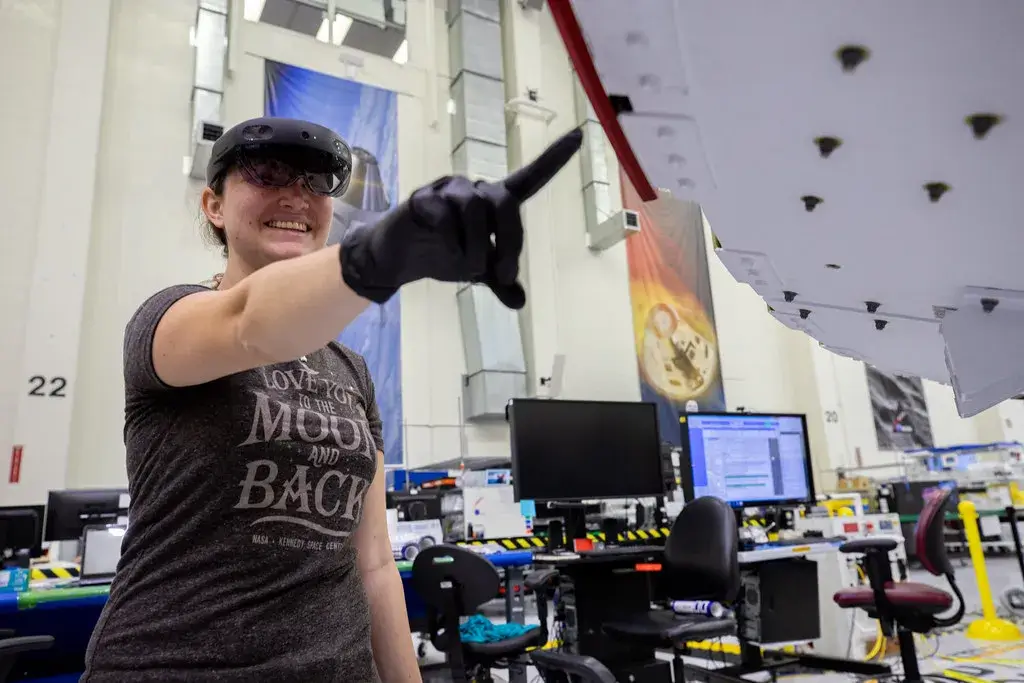
Virtual Reality (VR), what it?
You’ve probably heard of virtual reality (VR) but you may not know exactly what it is. VR is a computer-generated simulation of an environment that allows you to interact with it as if you were actually there. It can be used for gaming, entertainment, education, and more. With VR, you can explore new worlds, learn about other cultures, and even practice in dangerous situations without ever leaving your home, or stepping in to the hazardous environment. In this blog post, we will explore what VR is and how it is changing the way we live and learn.
What is VR?
Virtual Reality (VR) is a term that applies to computer-simulated environments that can simulate physical presence in places in the real world, as well as in imaginary worlds. These simulated environments can be similar to or completely different from the real world. Virtual reality is usually used for entertainment purposes, but it can also be used for educational and business purposes.
Some people say that virtual reality is the “ultimate empathy machine” because it can transport you to other people’s experiences and help you understand them in a way that is not possible with other media. For example, you could use VR to experience what it is like to walk a mile in someone else’s shoes or to see the world from their perspective.
There are many different types of virtual reality experiences. Some use special headsets and sensors to track your movements and provide an immersive experience. Others use simpler technologies like smartphone apps and 360-degree videos.
The Different Types of VR
There are currently three different types of VR technology: non-immersive, semi-immersive, and fully immersive.
Non-immersive VR does not completely block out the physical world. Instead, it uses devices such as head-mounted displays or CAVE systems to provide a limited field of view and track head movement. This allows users to interact with computer-generated objects in a realistic way.
Semi-immersive VR offers a more immersive experience by completely surrounding the user in a virtual environment.
Fully immersive VR is the most immersive type of VR as it completely blocks out the physical world. This is achieved using devices that produce a spatial HD view which provide a stereoscopic view and allow for full body tracking.
Pros and Cons of VR
There are a lot of potential advantages to using virtual reality technology. For one, it has the ability to immerse users in lifelike experiences that can be used for training or entertainment purposes. Additionally, VR can be used to create environments that are not possible in the real world, which gives people the opportunity to explore new places or experience things that they otherwise couldn’t.
However, there are also some potential drawbacks to VR. One is that the technology can be expensive and difficult to set up. Additionally, VR can in rare circumstances cause nausea or dizziness, and it may not be suitable for people with certain medical conditions.
What are the best Virtual Reality headsets?
There are many different VR headsets on the market, each with its own advantages and disadvantages. Some of the most popular VR headsets include the Meta Quest, HTC Vive, Sony PlayStation VR, and during 2024 Apple has launched (in some countries) there Apple Vision Pro.
The market is evolving rapidly, with several leading manufacturers expanding and refining the technology. Early headsets were so-called tethered and required a powerful CPU/GPU, where the VR experience itself was presented in the headset. The latest headsets are predominantly standalone and have sufficient resources to deliver the intended immersive experience.
How to use VR
If you’re new to virtual reality, you may wonder how to use VR and what it’s all about. This guide will give you a brief introduction to VR and how to get started with using it.
Virtual reality is a computer-generated environment that simulates real life. You can experience VR by wearing a headset that covers your eyes and ears. The headset tracks your head movements and adjusts what you see in the virtual world accordingly. This immerses you in the environment and gives you a sense of presence as if you are really there.
There are many different ways to use VR. Some people use it for gaming, while others use it for work or education. VR can also be used for entertainment, such as watching movies or attending live events. There are many different types of VR headsets available, so you’ll need to choose one that meets your needs.
Once you have a headset, you’ll need to download some VR content. This can be done through an app store or online marketplace specific to your headset. Once you have some content downloaded, put on your headset and follow the instructions provided. Most VR content is designed to be used standing up, so make sure you have enough space around you before getting started.
Alternatives to Virtual Reality
There are a few alternatives to VR that provide similar experiences without the use of dedicated headsets. One option is 360-degree video, which can be viewed on a regular phone, tablet or computer screen. This type of content gives the viewer a sense of being in the environment, but it lacks the immersion of VR. Another option is augmented reality (AR), which combines real-world and virtual elements. AR can be experienced through apps on a phone or tablet, and it often doesn’t require a headset. However, it also doesn’t provide the same level of immersion as VR.
Conclusion
Virtual reality is a technology that allows users to immerse themselves in a computer-generated environment. It has a wide range of applications, from entertainment and gaming to education and training. While VR has been around for several years, it is only now starting to become mainstream thanks to advances in hardware and software. With the rapid expansion of the VR industry, it’s likely that we’ll see even more innovative uses for this technology in the future.





